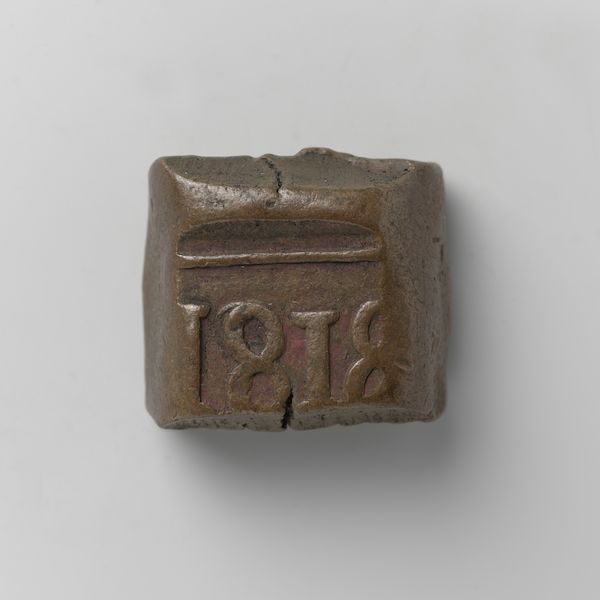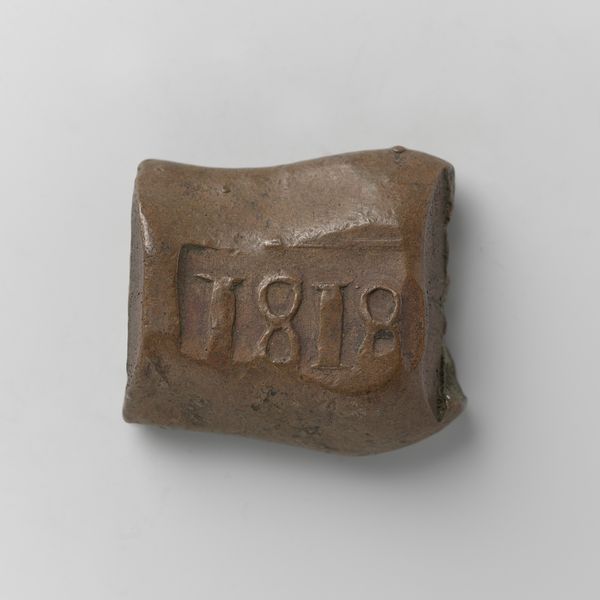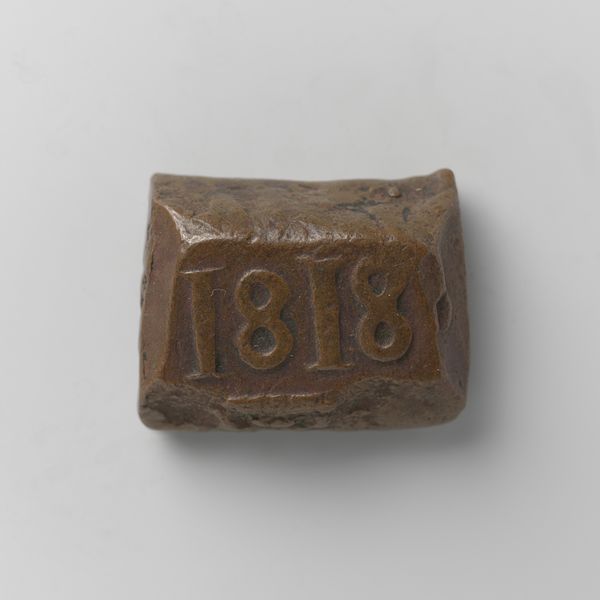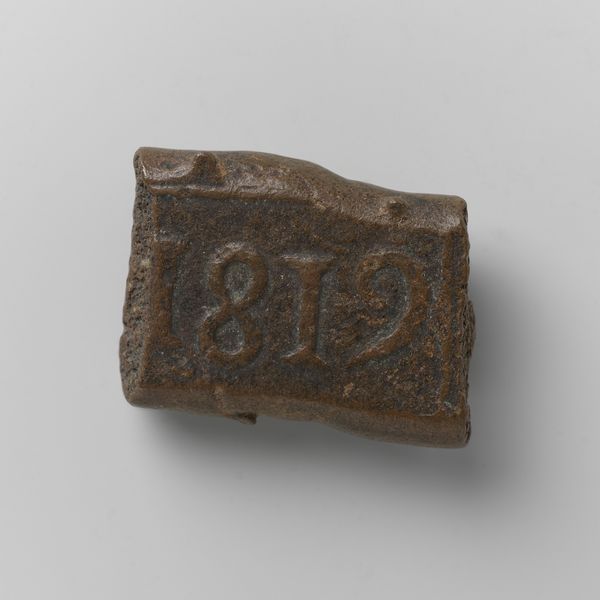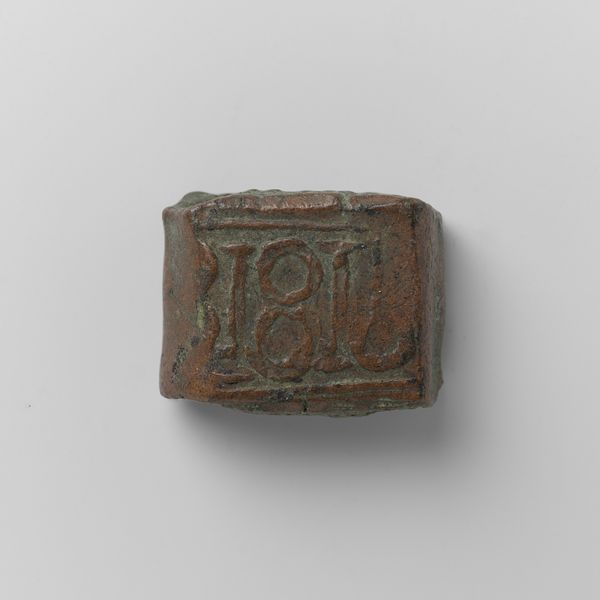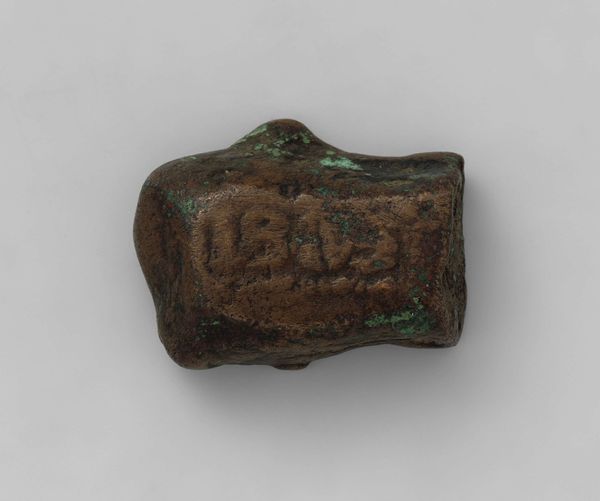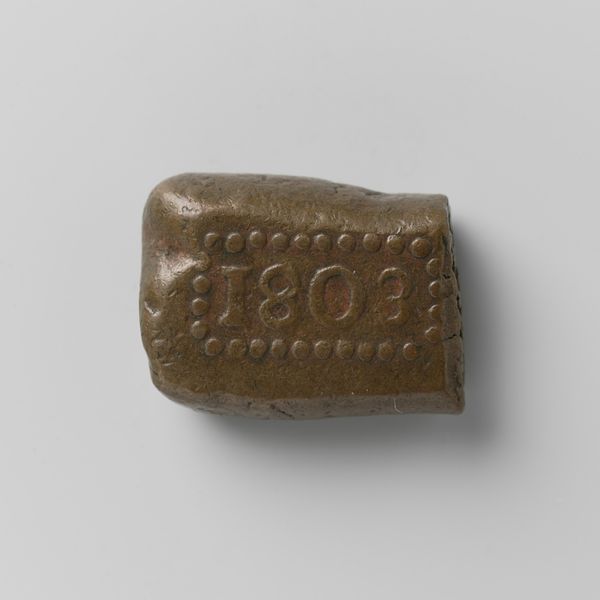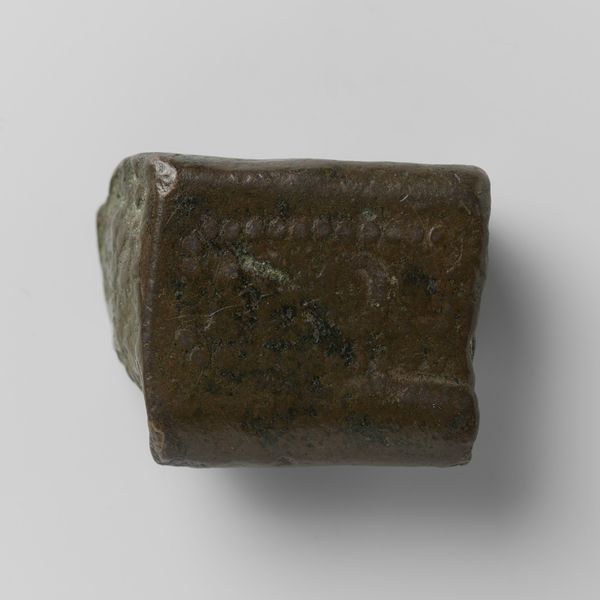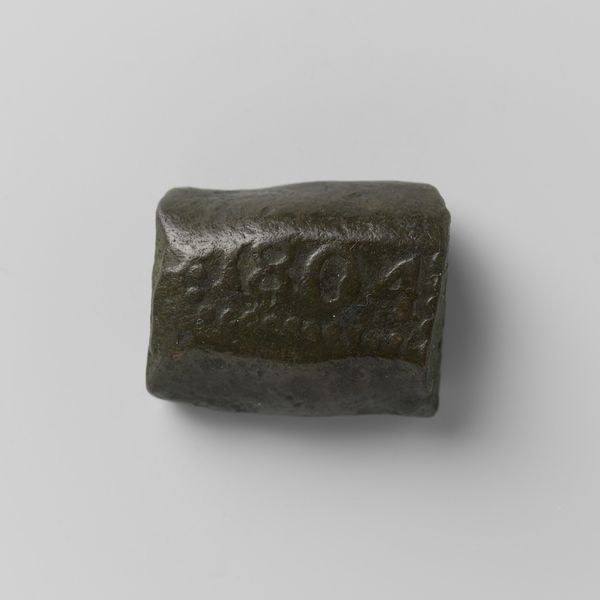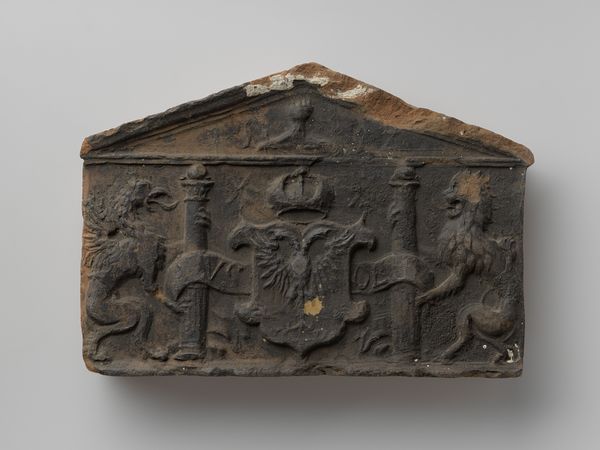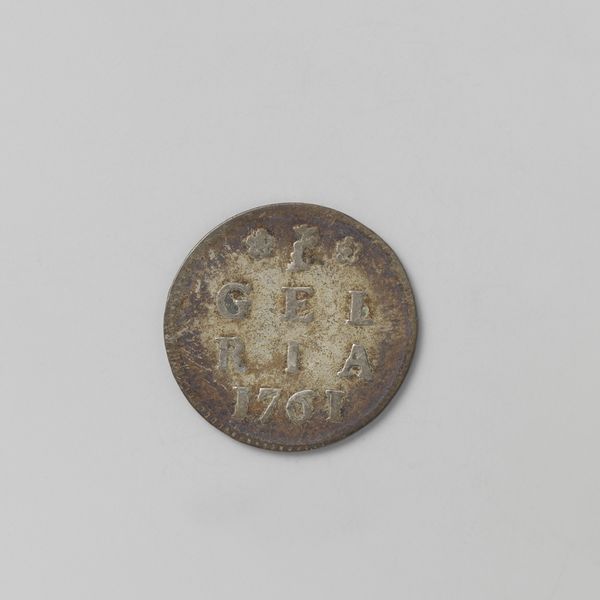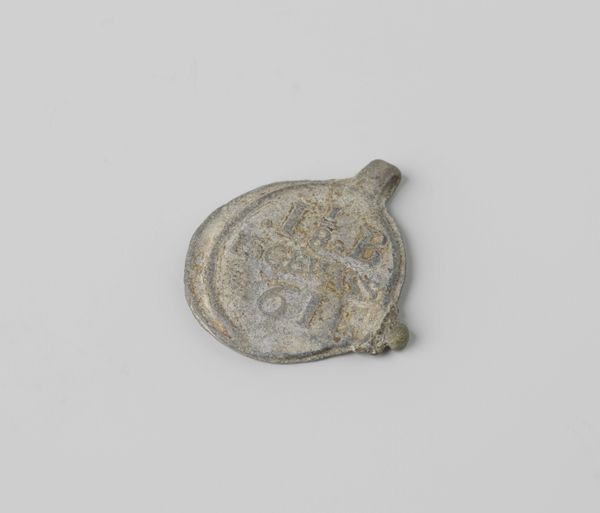
print, metal, sculpture
# print
#
metal
#
sculpture
#
indigenism
#
sculpture
Dimensions: length 2.0 cm, width 2.4 cm, thickness 1.1 cm, weight 26.63 gr
Copyright: Rijks Museum: Open Domain
This is a copper two-stuiver coin from the Dutch East Indies, commissioned in 1819 by King Willem I of the Netherlands. The coin's square shape immediately sets it apart from conventional currency, challenging our expectations of form and function. The rough, uneven edges contrast sharply with the clear, deeply impressed numerals. The year '819', bisected, forces the eye to reconcile fragmented pieces into a coherent whole, playing with perception and order. The coin's materiality speaks to broader themes. Copper, a common metal, gains value through its inscription, subtly commenting on the construction of worth and the power of symbols. The stark digits against the worn metal surface invite us to consider how even seemingly stable systems of value can erode over time. Ultimately, this coin, beyond its monetary function, serves as a reminder of how design encodes meaning and how even mundane objects can spark a discourse about power, perception, and the very nature of value.
Comments
No comments
Be the first to comment and join the conversation on the ultimate creative platform.
